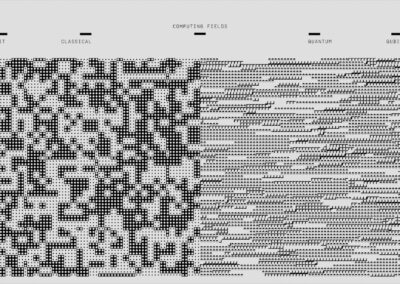Adapting Threat Intelligence to Evolving Data Privacy Regulations
The Intersection of Threat Intelligence and Data Privacy
The future of threat intelligence and data privacy regulations is becoming increasingly intertwined as the importance of data protection continues to grow. In an era where cyber threats are evolving rapidly, and the amount of data generated is skyrocketing, organizations must navigate the complex landscape of cybersecurity while ensuring compliance with stringent data privacy laws. This challenge is particularly pronounced in regions like Saudi Arabia and the UAE, where digital transformation is accelerating and regulatory frameworks are becoming more robust.
Threat intelligence plays a crucial role in identifying and mitigating cyber threats before they can cause significant damage. By analyzing data from various sources, organizations can gain insights into emerging threats and develop proactive defense strategies. However, the collection, storage, and analysis of threat intelligence data must be balanced with compliance with data privacy regulations. In Riyadh and Dubai, businesses must ensure that their threat intelligence efforts do not violate local data protection laws, which can lead to severe penalties and damage to reputation.
Data privacy regulations, such as the General Data Protection Regulation (GDPR) in Europe and similar laws in other regions, impose strict requirements on how personal data is handled. These regulations mandate that organizations obtain explicit consent from individuals before collecting their data, implement robust security measures to protect the data, and ensure that individuals have the right to access, correct, and delete their data. In Saudi Arabia and the UAE, the growing emphasis on data privacy means that organizations must carefully consider how they manage threat intelligence data to remain compliant.
Strategies for Balancing Threat Intelligence and Data Privacy
To effectively balance threat intelligence with data privacy regulations, organizations must adopt strategies that prioritize both cybersecurity and data protection. One of the key strategies is to implement data anonymization and pseudonymization techniques. These techniques involve altering data in such a way that it cannot be traced back to an individual, thereby protecting personal information while still allowing for the analysis of threat intelligence data. In Saudi Arabia and the UAE, where data privacy is becoming increasingly important, anonymization and pseudonymization can help organizations comply with regulations while maintaining robust cybersecurity defenses.
Another important strategy is to establish clear data governance policies that define how threat intelligence data is collected, stored, and used. These policies should outline the specific purposes for which data is collected, ensure that data is only retained for as long as necessary, and mandate regular audits to verify compliance with data privacy regulations. In regions like Riyadh and Dubai, where regulatory frameworks are evolving, having comprehensive data governance policies can help organizations stay ahead of regulatory requirements and avoid potential legal issues.
Collaboration and information sharing are also crucial for balancing threat intelligence and data privacy. By participating in industry forums and threat intelligence sharing platforms, organizations can gain valuable insights into best practices for managing data privacy and cybersecurity. In the Middle East, fostering a culture of collaboration and trust among businesses can enhance overall cybersecurity resilience while ensuring compliance with data privacy regulations. Public-private partnerships and regional initiatives can further support these efforts by providing a framework for secure and compliant information sharing.
The Future of Threat Intelligence in the Context of Data Privacy
As data privacy regulations continue to evolve, the future of threat intelligence will be shaped by the need to balance robust cybersecurity with stringent data protection requirements. One significant trend is the increasing use of Artificial Intelligence (AI) and Machine Learning (ML) in threat intelligence. These technologies can enhance the analysis and detection of cyber threats while also ensuring that data privacy is maintained. AI and ML can automate the process of data anonymization and ensure that personal information is protected during the analysis of threat intelligence data. In Saudi Arabia and the UAE, where AI adoption is on the rise, integrating these technologies into threat intelligence efforts can provide a competitive edge while ensuring compliance with data privacy regulations.
Blockchain technology is another innovation that holds promise for the future of threat intelligence in the context of data privacy. The decentralized and immutable nature of blockchain can provide a secure framework for storing and sharing threat intelligence data. By leveraging blockchain, organizations can ensure that data integrity is maintained and that personal information is protected from unauthorized access. In regions like Riyadh and Dubai, where blockchain initiatives are gaining momentum, integrating blockchain into threat intelligence strategies can enhance both cybersecurity and data privacy.
The increasing emphasis on data privacy will also drive the development of new regulatory frameworks and standards for threat intelligence. Governments and regulatory bodies will likely introduce more detailed guidelines on how threat intelligence data should be handled to protect personal information. Organizations will need to stay informed about these developments and continuously adapt their threat intelligence practices to ensure compliance. In Saudi Arabia and the UAE, staying ahead of regulatory changes will be crucial for maintaining a strong cybersecurity posture and protecting sensitive data.
In conclusion, the future of threat intelligence will be significantly influenced by the growing importance of data privacy and protection regulations. By adopting strategies such as data anonymization, establishing clear data governance policies, and leveraging advanced technologies like AI and blockchain, organizations in Saudi Arabia, the UAE, Riyadh, and Dubai can balance robust threat intelligence efforts with compliance with data privacy regulations. As the threat landscape continues to evolve, maintaining this balance will be essential for ensuring both cybersecurity resilience and the protection of personal information.
—
#threatintelligence #dataprivacy #dataprotection #cybersecurityregulations #SaudiArabia #UAE #Riyadh #Dubai























